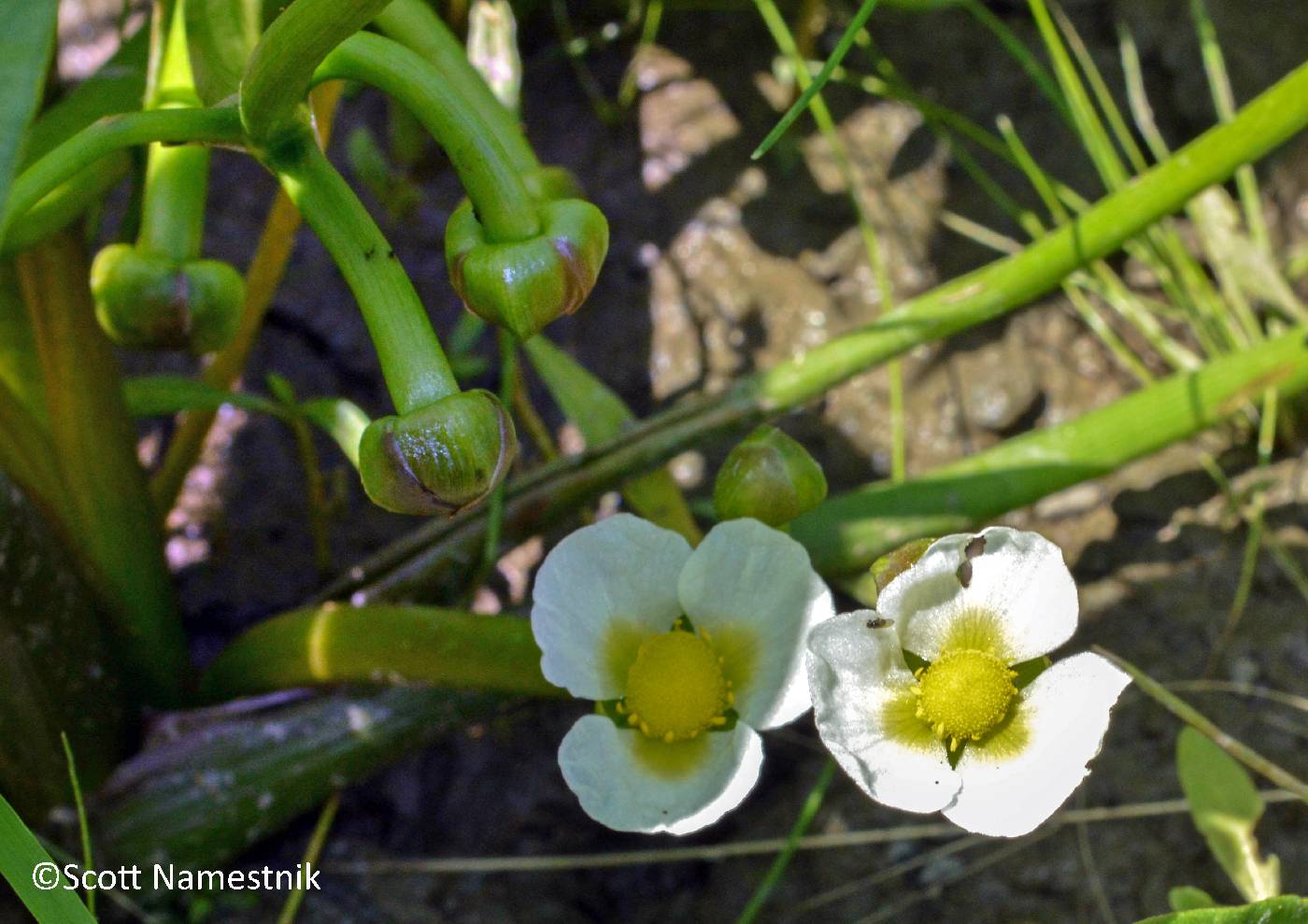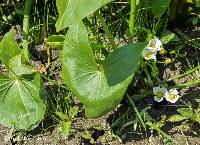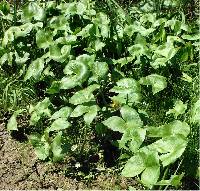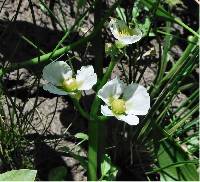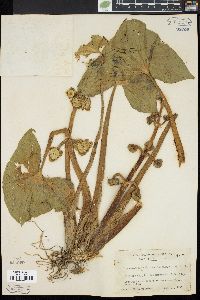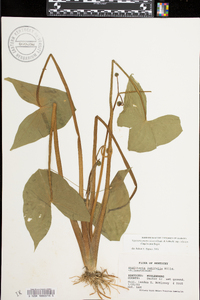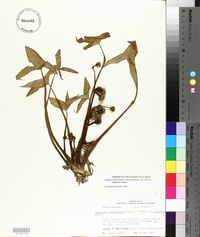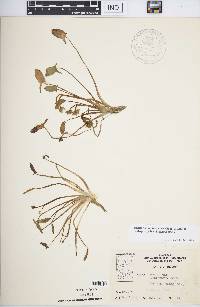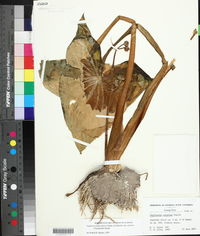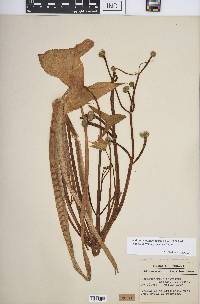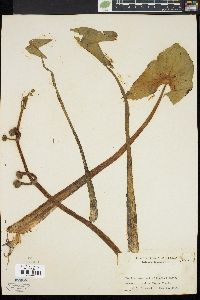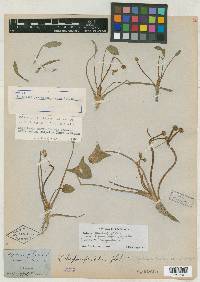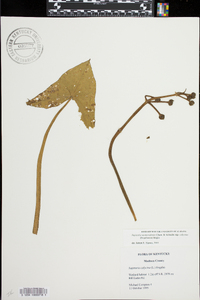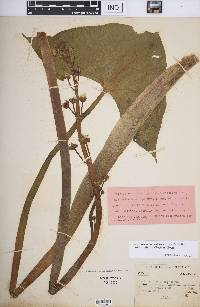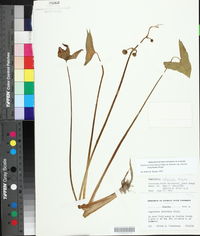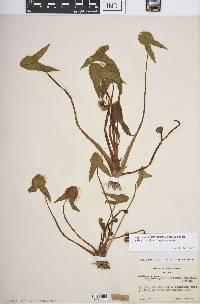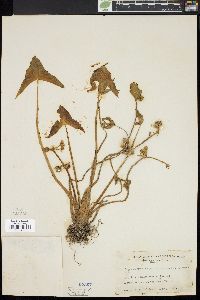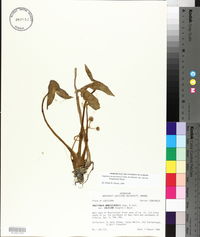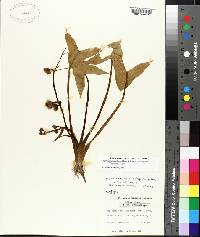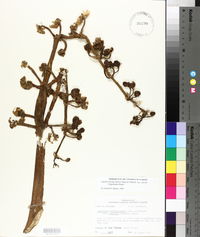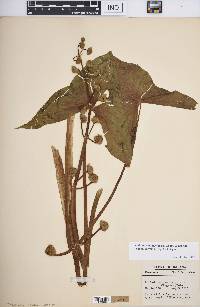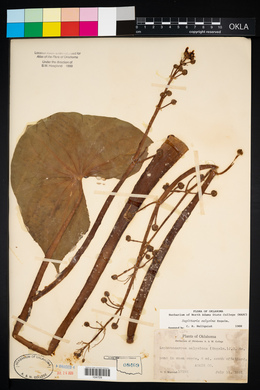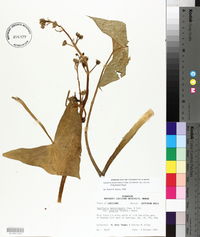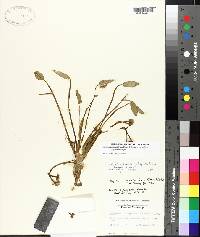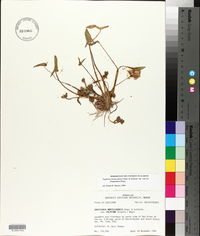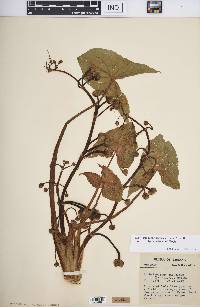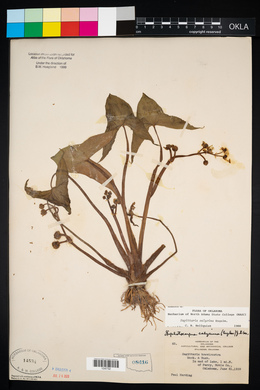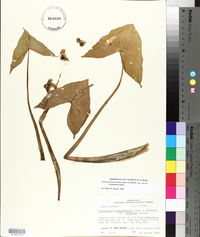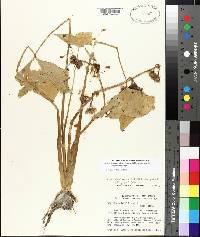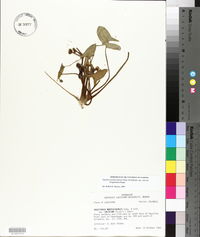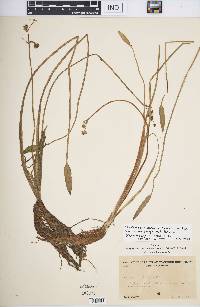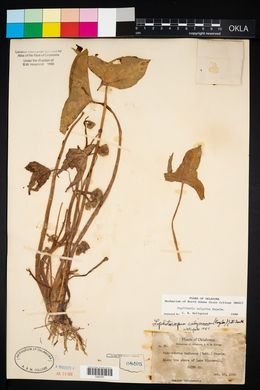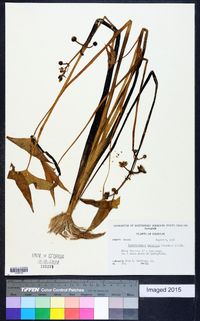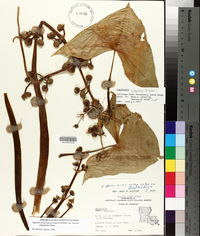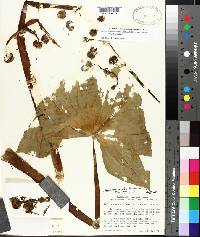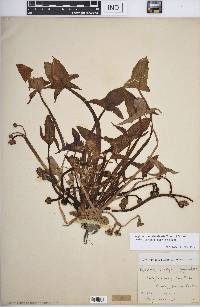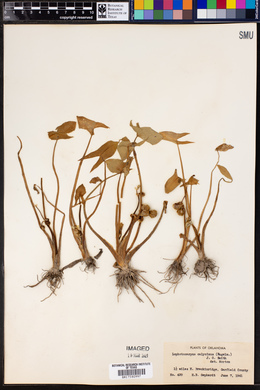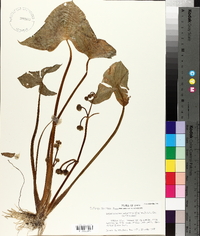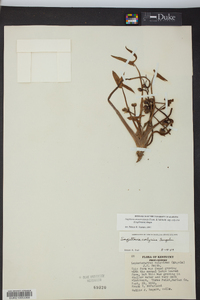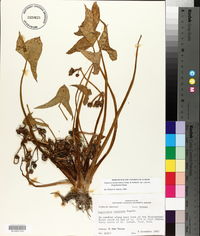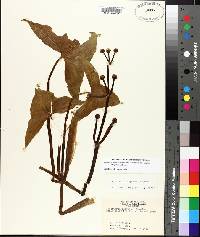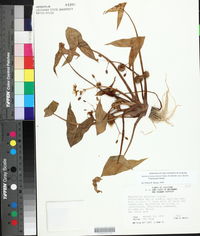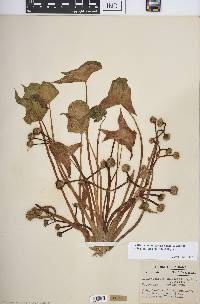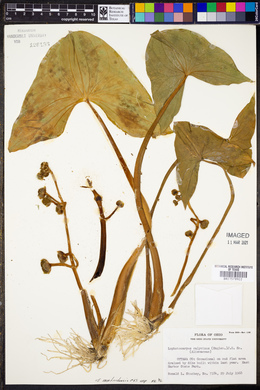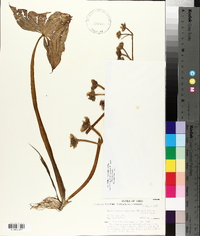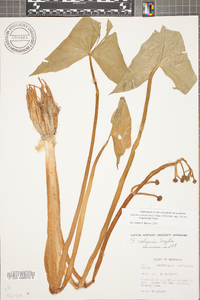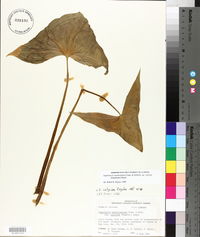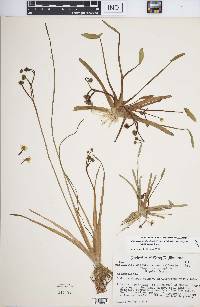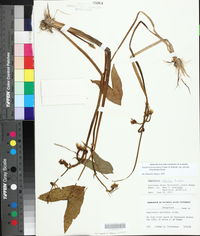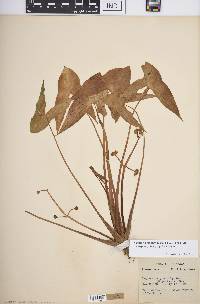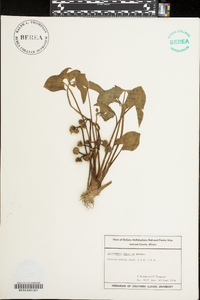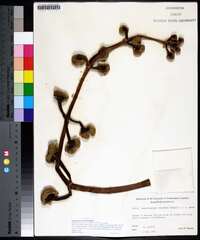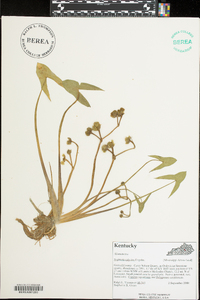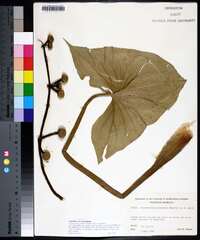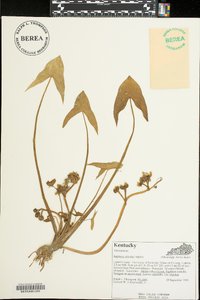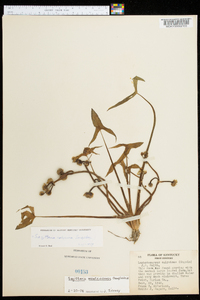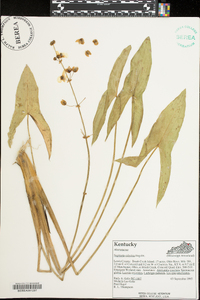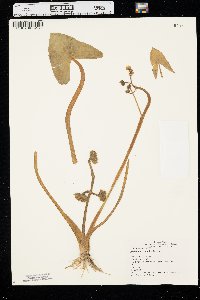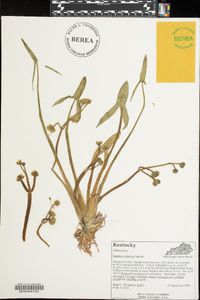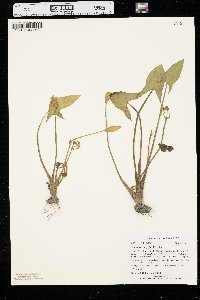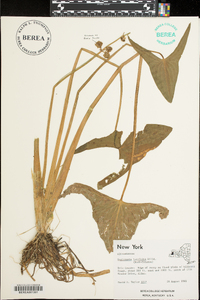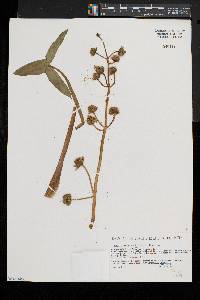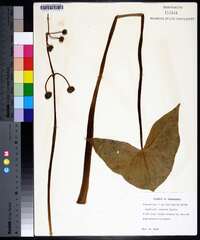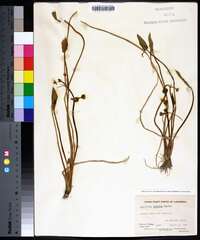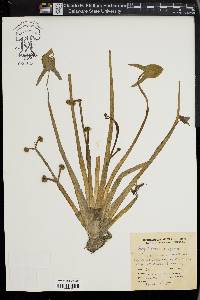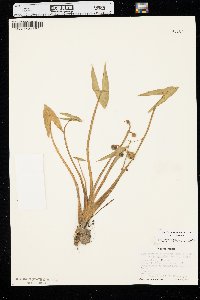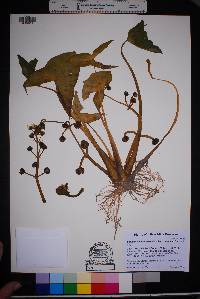Sagittaria montevidensis subsp. calycina
|
Sagittaria montevidensis subsp. calycina (Engelm.) Bogin
 (redirected from: Sagittaria calycina var. depauperata Engelm. & J.G.Sm.) (redirected from: Sagittaria calycina var. depauperata Engelm. & J.G.Sm.) |
|
|
Family: Alismataceae
Hooded Arrowhead, more...Hooded Arrowhead, Hooded Arrow-Head
[Lophotocarpus californicus J.G. Sm., moreLophotocarpus calycinus (Engelm.) J.G. Sm., Lophotocarpus depauperatus J.G. Sm., Sagittaria calycina Engelm., Sagittaria calycina calycina , Sagittaria calycina var. calycina , Sagittaria calycina var. depauperata Engelm. & J.G.Sm., Sagittaria calycina var. fluitans Engelm., Sagittaria calycina var. maxima , Sagittaria calycina var. media] |
Herbs, annual or perennial, not stranded by low tide. Leaves submersed and emersed; submersed leaves sessile, blade linear; emersed leaves petiolate, blade hastate to sagittate. Inflorescences of 1--15 whorls, floating or emersed; bracts distinct. Flowers: pistillate with ring of sterile stamens; petals without purple spot at base. Flowering mid summer--fall. Mud flats of lakes and rivers; 5--2000 m; Ala., Ark., Calif., Colo., Del., Ga., Ill., Ind., Iowa, Kans., Ky., La., Mich., Minn., Miss., Mo., Nebr., N.Mex., N.C., Ohio, Okla., S.C., S.Dak., Tenn., Tex., Va., W.Va., Wis. ; Mexico (Chihuahua, Coahuila, Sinaloa). Annual or perennial aquatic herb to 1 m tall Leaves: submersed and emersed, with linear submersed leaves to 0.5 cm wide and arrowhead-shaped emersed leaves 40 cm - 0.6 m long. Inflorescence: floating or emersed, singly stalked along a central axis (raceme), or with loosely branched stalks (panicle), arising from a stalk 10 cm - 1.5 m long, with one to fifteen whorls of flowers. Flowers: either male or bisexual, with male flowers on upper part of inflorescence and bisexual flowers near base, 2 - 5 cm wide. Male flowers have spreading sepals and cylindric filaments that are longer than the anthers and lack scales. Bisexual flowers have erect sepals enclosing the flower and a ring of sterile stamens. Fruit: a cluster of achenes 1.2 - 2.1 cm in diameter. Each achene is 2 - 4.3 mm long, 0.7 - 1.5 mm wide, narrow and inversely egg-shaped, with a horizontal beak 0.4 - 0.8 mm long. Bracts: lance-shaped to elliptic, not fused, delicate. Similar species: Sagittaria latifolia, Sagittaria brevirostra, Sagittaria cuneata, and Sagittaria montevidensis ssp. calycina all have emersed arrowhead-shaped leaves and filaments lacking scales. Sagittaria latifolia has nearly all emersed leaves that are highly variable (linear to arrowhead-shaped) and achenes with beaks spreading horizontally. Sagittaria brevirostra also has mostly emersed leaves, but they are nearly all arrowhead-shaped. The edges of S. brevirostra achenes are minutely shallow-toothed and the beaks are ascending. Sagittaria cuneata has submersed ribbon-like leaves, floating lance- to arrowhead-shaped leaves, emersed arrowhead-shaped leaves, and achenes with short, erect beaks. Additionally, each of the above species has separate male and female flowers and reflexed or spreading sepals. Flowering: June to September Habitat and ecology: A rare species growing in marshes, shallow water, and along pond margins and shorelines. Etymology: Sagittaria comes from the Latin word sagitta, meaning arrow, referring to the leaf shape. Calycina means calyx-like. Author: The Morton Arboretum Annual, erect, or lax in deep-water forms; petioles elongate, terete, very spongy, typically with emersed or floating, hastate or sagittate blade 4-60 cm, the terminal lobe linear to deltoid-orbicular, the basal lobes large, pointed, divergent; small or deep-water forms with only submersed, linear lvs to 0.5 cm wide; scape stout, terete, 1-15 dm; fls in 3-12 whorls, the upper staminate, on long, slender pedicels, the middle and lower perfect, on somewhat shorter, stout, recurved pedicels; bracts mostly ovate, connate below, very thin and soon withering; sep 4-12 mm, broad, blunt, appressed to the fruiting head; pet 7-15 mm; stamens 9-12 in perfect fls, 12-many in staminate ones; filaments roughened with minute scales; achenes 2-3 mm, narrowly winged on the dorsal and ventral margins only, the sides wingless, the oblique or horizontal beak often more than half as long as the width of the body; 2n=22. Marshes, ponds, and streams, in circumneutral or alkaline waters; drainage of the Mississippi R. (sens. lat.), n. to lakes Michigan and Erie, s. to Tex., N.M., and Mex., and apparently e. sporadically to Del.; Calif. June-Oct. (S. montevidensis ssp. c.; Lophotocarpus c.; L. depauperatus) Gleason, Henry A. & Cronquist, Arthur J. 1991. Manual of vascular plants of northeastern United States and adjacent Canada. lxxv + 910 pp. ©The New York Botanical Garden. All rights reserved. Used by permission. From Flora of Indiana (1940) by Charles C. Deam Restricted to the southern part of the state where it is found in artificial ponds and in sinkholes. All of my specimens were found in such habitats except one, which was from a muddy slough along White River in Greene County. When once established in a pond or sinkhole, it soon becomes the dominant plant, usually almost crowding out all other species. It is fast migrating northward, and I now find it in places where it was absent 20 years ago. None of our early authors reported it. Probably introduced. Indiana Coefficient of Conservatism: C = 6 Wetland Indicator Status: OBL |
